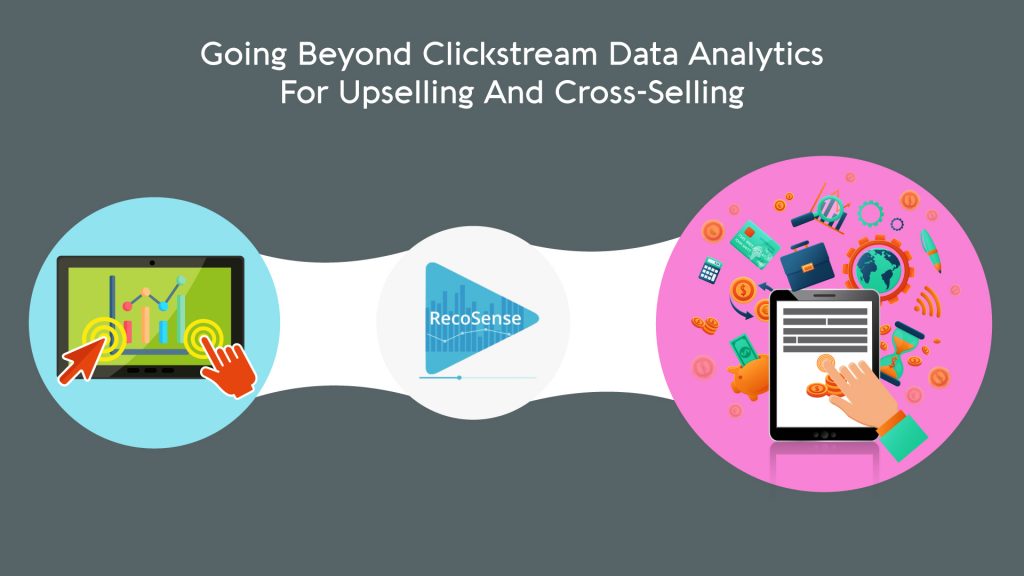Over the years, clickstream data analysis has allowed media and entertainment companies to understand their users. However, insights from clickstream data can barely correlate with the type of content users consumed. This is mainly due to the limited set of data media and entertainment companies obtain from Google Analytics integration. Although insights from web analytics platforms can show descriptive statistics like popular content, average time spent, sessions per user, companies cannot find a relation between content and users.
To mitigate some of the shortcomings with clickstream data analysis, Microsoft released Clarity to provide screen-recording of uses’ interaction. This allows companies to obtain more insights like heatmaps, scrolls, and more, but it only becomes an extension of Google Analytics. Microsoft Clarity did not provide content intelligence. Besides, watching session playbacks on Microsoft Clarity manually of millions of users is beyond human capability to extract value from such information.
In the ever-changing users’ behavior, media and entertainment companies need to go beyond clickstream data analysis and obtain a contextual understanding for delivering bespoke content for upselling and cross-selling.
Clickstream vs Contextual Insights/Content Intelligence
Clickstream data can provide companies with necessary information about users’ interactions, journeys, and actions. Such data were a gamechanger for media and entertainment organizations in the past, but with the increase in competition, companies seek in-depth information about users and the content they consume to offer a superior personalized user experience. To stay ahead of the competition, today media and entertainment organizations want to know what drives the user to behave in the way they do. As a result, organizations wish to know the why’s, what’s, and how’s from the data, which clickstream information fails to deliver.
On the other hand, contextual insights allow media and entertainment organizations to find relationships between users’ behavior with content. This not only gives meaning to users’ actions but also offers content intelligence. Every time users engage with content, machine learning models can collect associated metadata and predict users’ interests. Leveraging such rich insights empowers media and entertainment companies to offer customized content. Content intelligence goes beyond what clickstream analysis does for the media organization to provide an edge over competitors.
Benefits Of Embracing Content Intelligence?
With content intelligence, media organizations can make effective decisions to enhance engagement, retain users, optimize customer journeys, and target potential audiences. Contextual insights open up the door for media and entertainment industries to assimilate users’ choices for cross-selling and upselling content to deliver more value. For instance, content intelligence can notify which content triggered the subscription, compare engagements with free versus subscription content, identify patterns among users, and more.
Going beyond clickstream analysis with content intelligence assists media organizations in determining the cornerstone content. This can be used effectively to trigger subscriptions through advertisements or create a funnel for free users to purchase the subscription package. Besides, media companies can offer personalized newsletters to users, estimate the reach of new content among users, and more. In combination with clickstream data analysis, content intelligence can boost conversion rates by effectively planning and executing campaigns.
Tech Behind Contextual Understanding
While several recommendation systems can provide personalizations, the most crucial aspect of content intelligence is understanding users’ context, not just the historical data that recommenders leverage. Consequently, recommender engines are optimized with other technologies to shift weights while predicting content.
One of the ways to focus on users’ interest is by generating a word cloud with metadata of the content. Whenever users interact with content, systems can collect associated metadata with content. A data pipeline is created to use this information for generating word clouds. Word clouds vary the size of words proportional to the frequency of metadata, describing users’ interests.

For instance, from the above image, if a word cloud contains words like basketball, football, Nicolas Cage, Nicky Whelan, Stuart Orme, and more. Depending on the more frequent terms, machine learning models can be optimized to place weightage on the most frequent keywords for recommendations. Besides, word clouds could be used to predict interests in content that have Nicolas Cage and Jack Monaghan, enabling models to predict other content beyond the primary interest, which in this case is Nicolas Cage.
Wordcloud, however, is not the only approach to optimize recommender systems for content. Users often click on content, but they immediately move away to another content. In this case, the word cloud could generate metadata from content that might not be relevant, increasing the chance of false-positive error. To address this, time spent on the content can be associated with metadata to understand the significance of generated word clouds.
Optimizations of recommendation systems can be endless and depend on a plethora of parameters. Proper consideration of variables is key to ensuring desired outcomes from content intelligence.
Making The Move
Since media and entertainment companies handle a colossal amount of data, companies need to make the most out of information and improve users’ journey on the platforms. Integrating machine learning systems can effortlessly process a massive amount of data and automate the entire process, end-to-end. However, as easy as it may sound, implementing content intelligence with machine learning requires experts to simplify the deployment process. What makes it even more difficult is that companies have to continuously monitor and optimize their models, increasing the operational costs forever.
As a workaround, companies can collaborate with service providers like RecoSense, which has deep expertise in offering machine learning-based solutions for media and entertainment industries, and automate the entire process within a few days. RecoSense offers its solutions for content intelligence and continuously optimizes the machine learning models to deliver desired results. Embracing solutions can help media and entertainment organizations quickly get started while reducing the costs and efforts of starting from scratch.
Content intelligence has become an integral part of media and entertainment organizations that are gaining ground in the industry and providing content users seek with minimal friction. And with the benefits, contextual insights deliver, adoption of content intelligence with machine learning models will only rise.


Leave a Reply